
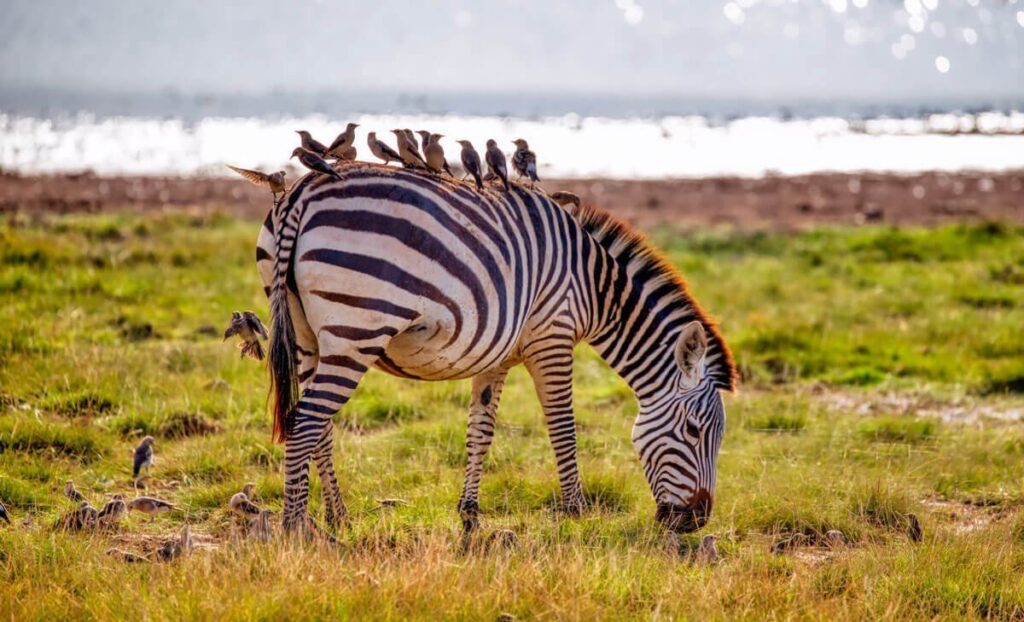
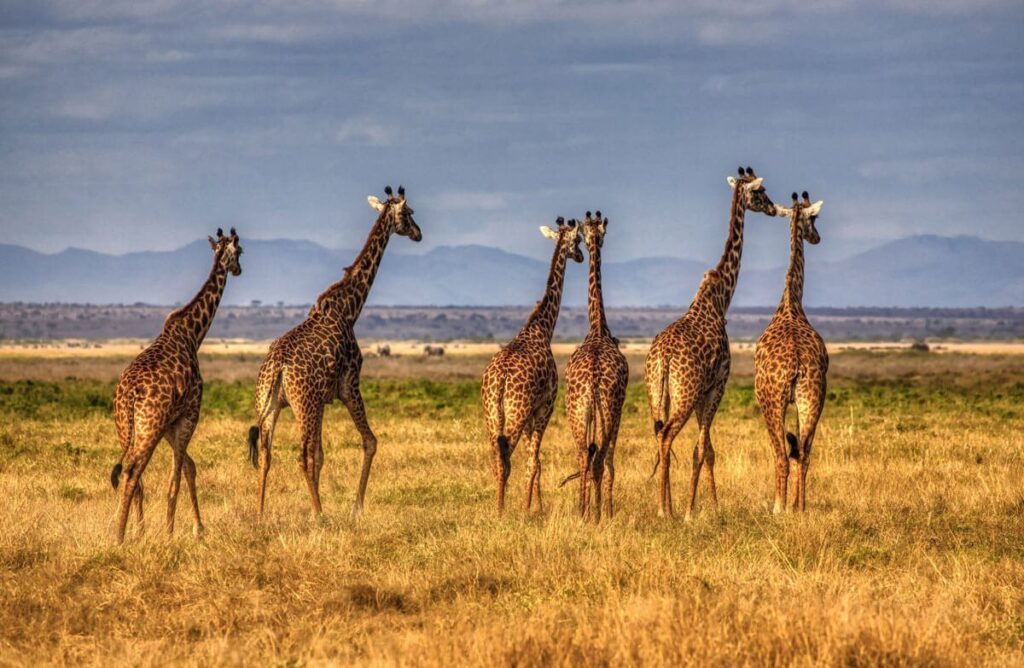
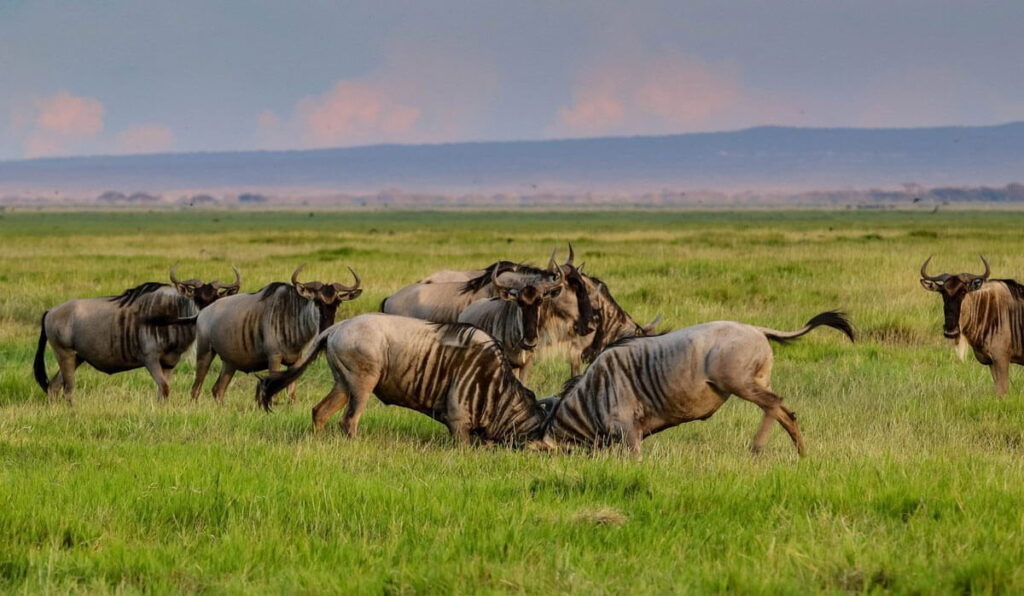
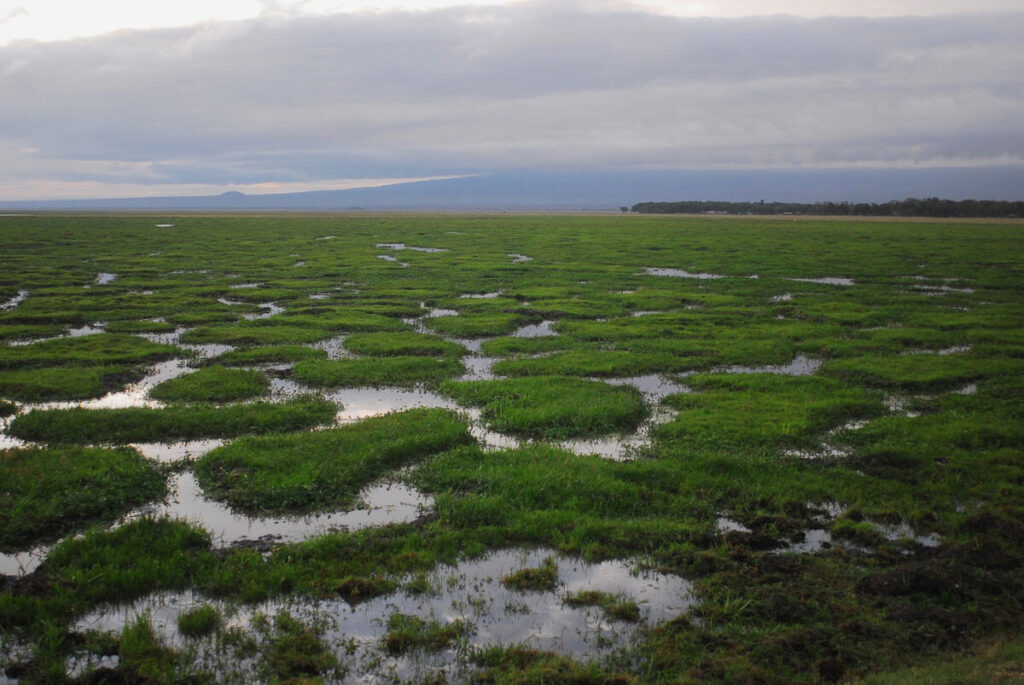
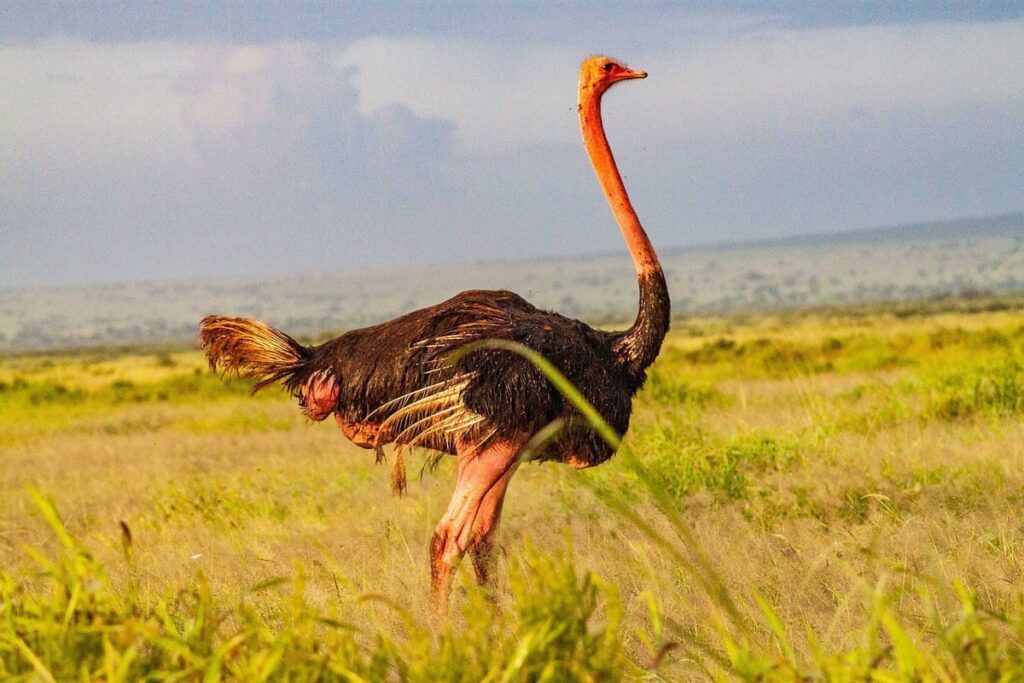
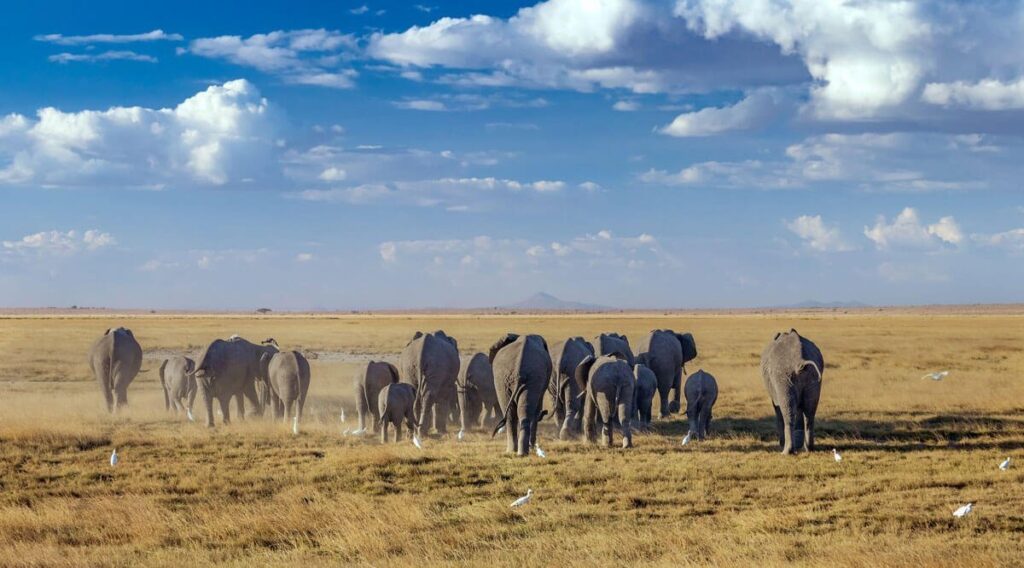
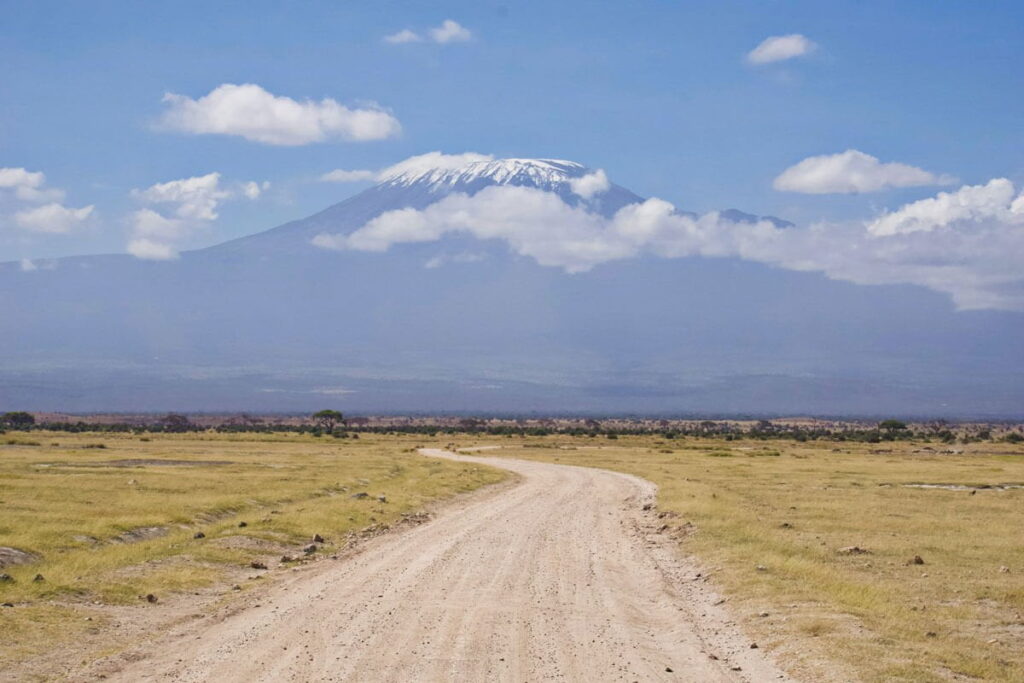
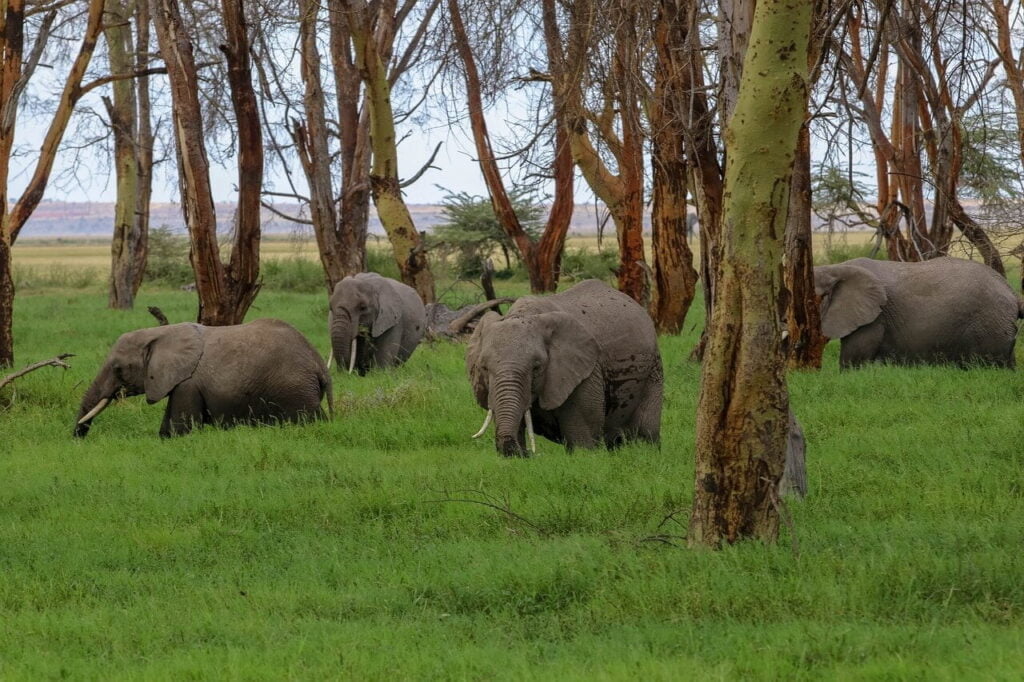
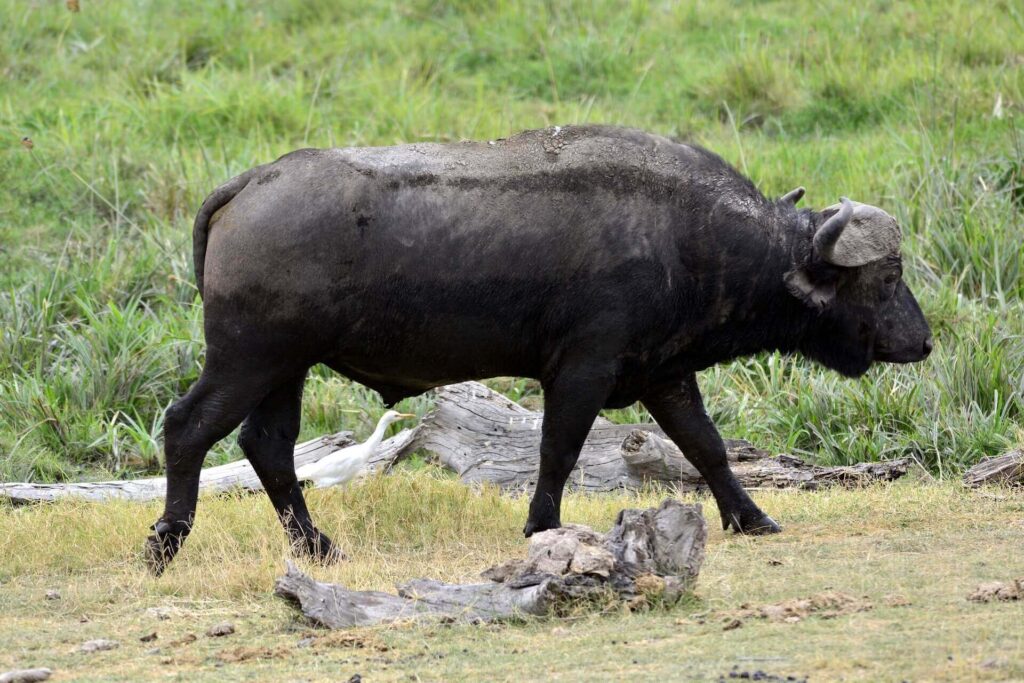
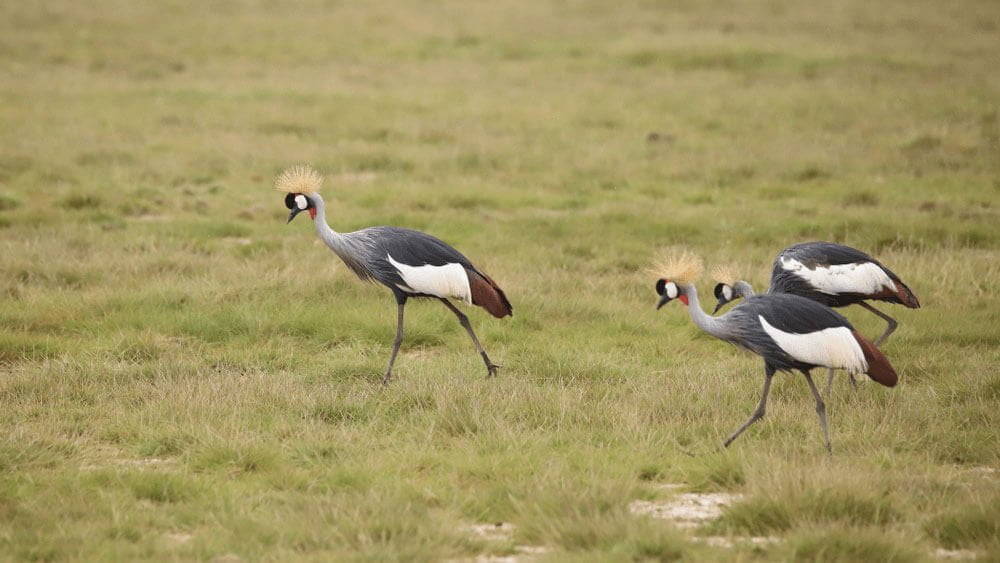
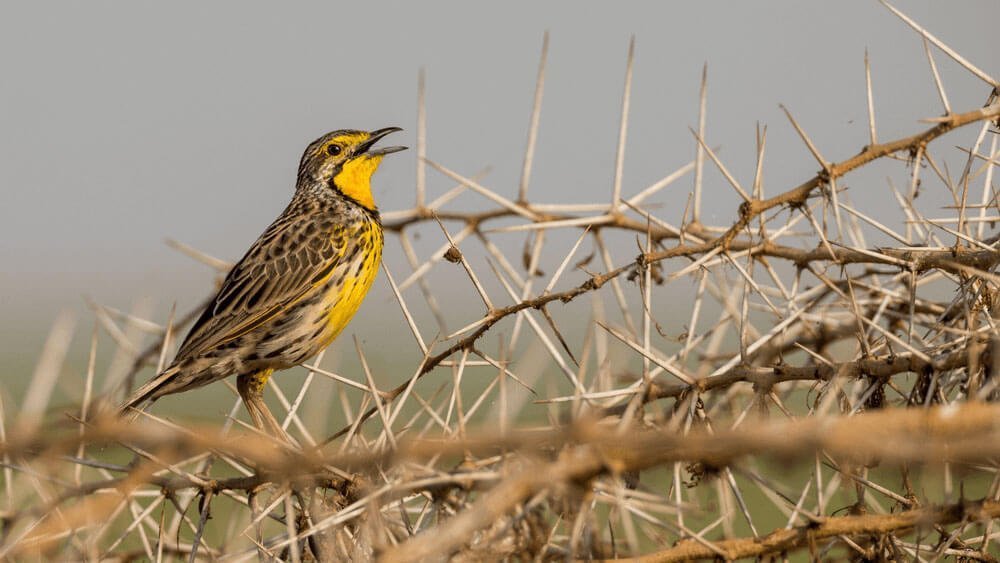
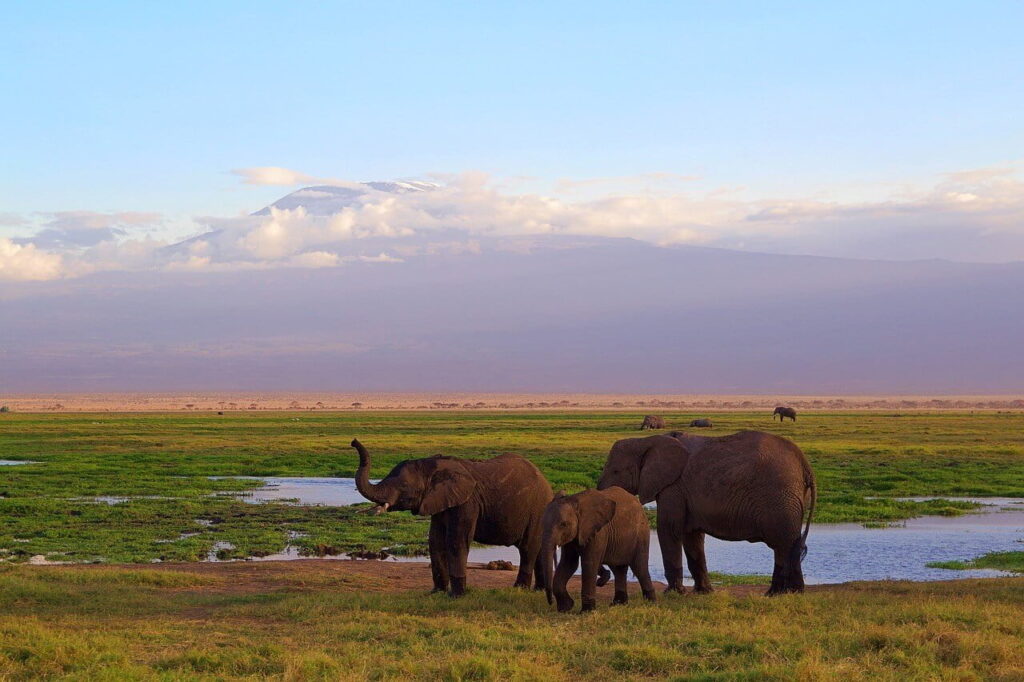
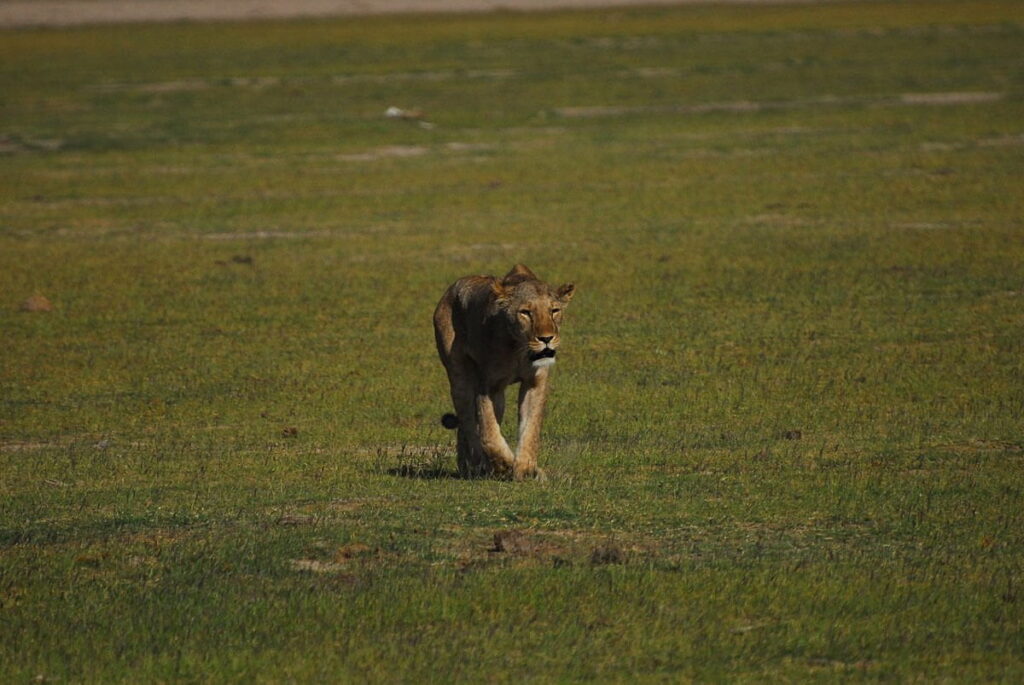
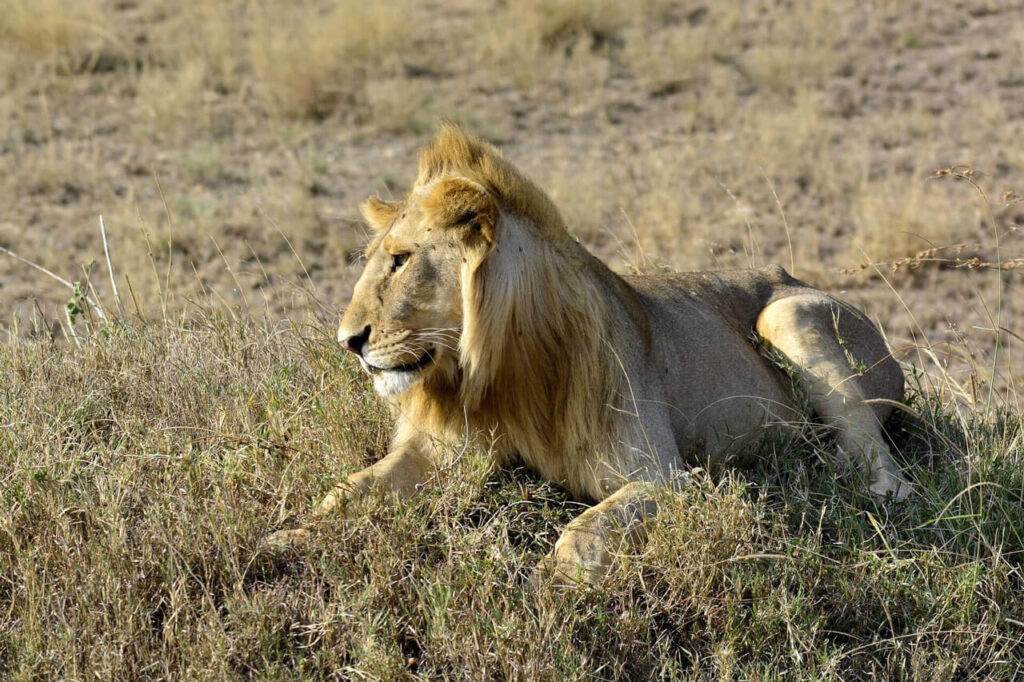
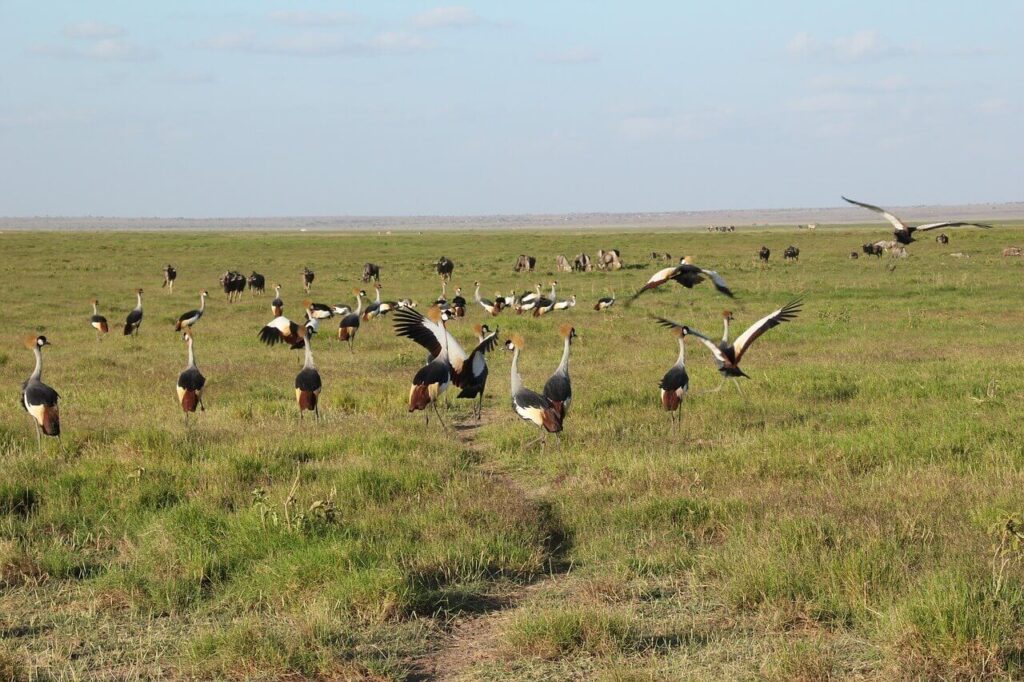
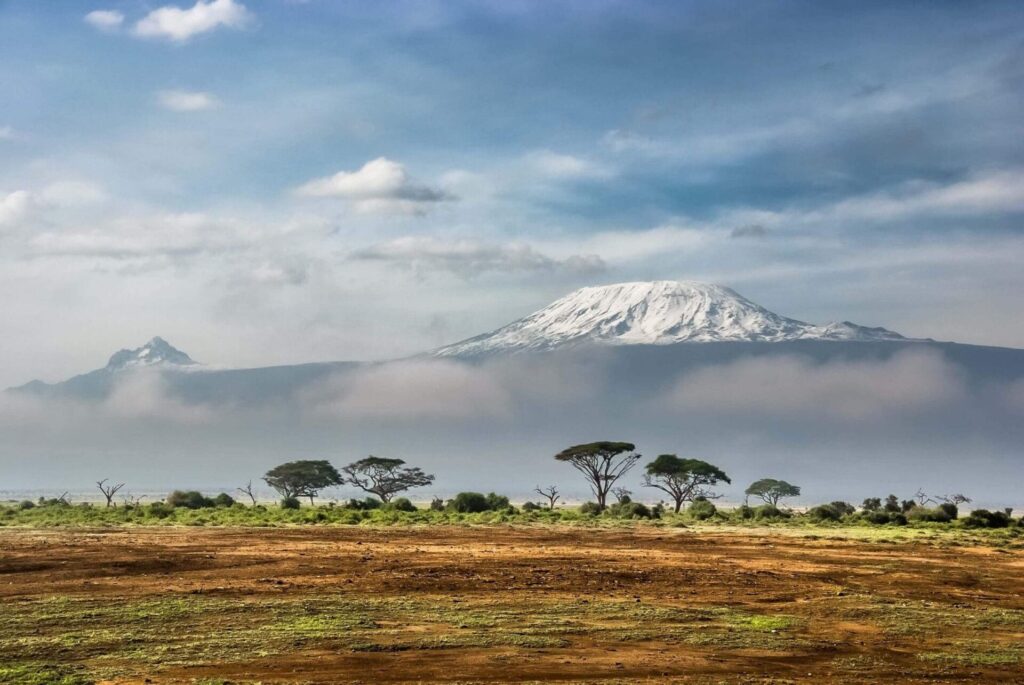
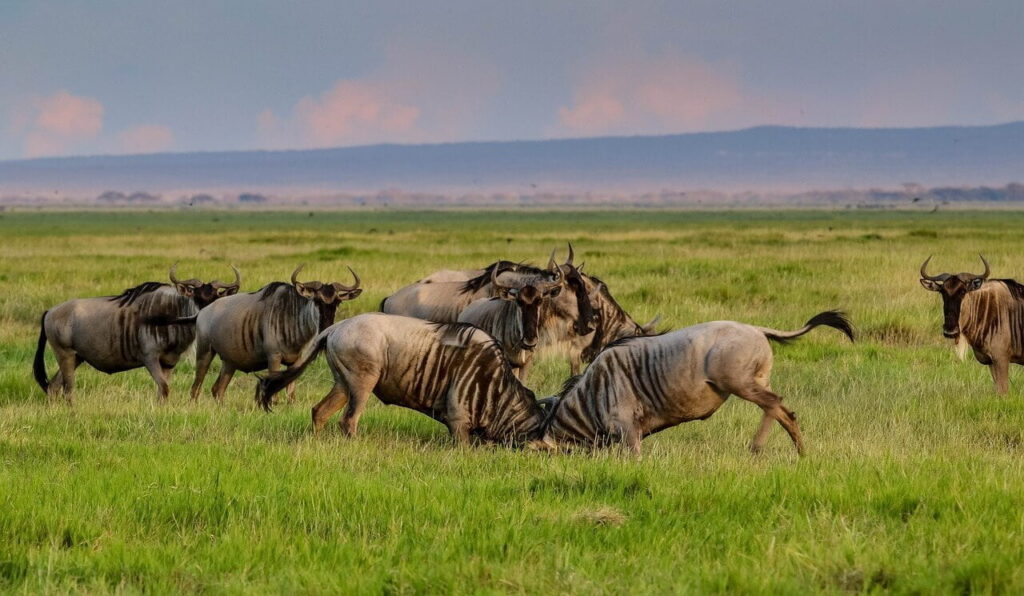
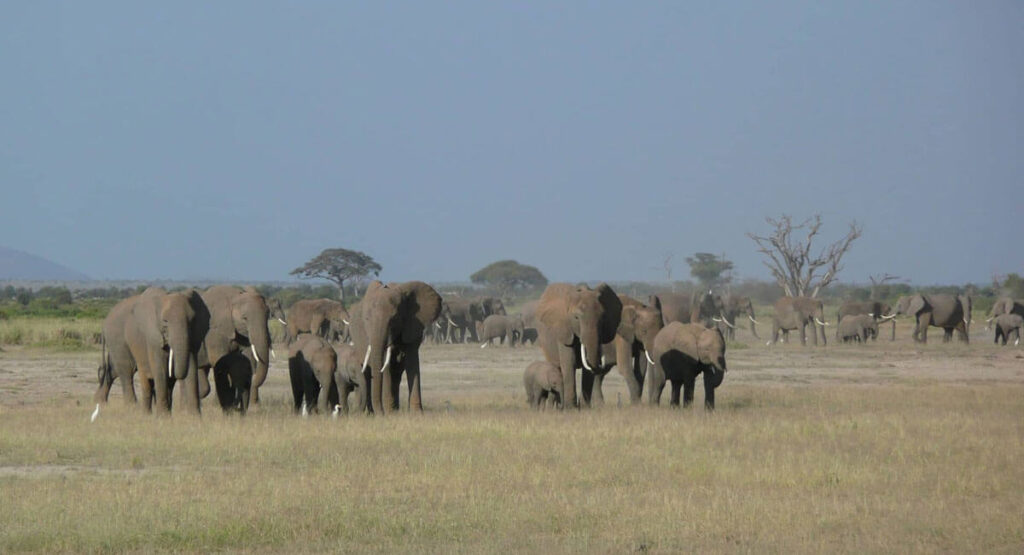
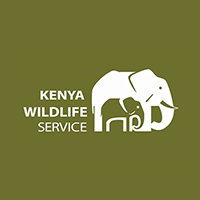
Affiliate Disclosure: This listing may contain affiliate links. If you click through and book a tour, I may earn a small commission at no extra cost to you.
Amboseli National Park is one of Kenya’s most famous safari destinations, celebrated as the best place in Africa to get close to free-roaming elephants. Located in Loitoktok, Kajiado County, the park sits at the northwestern base of Mount Kilimanjaro along the Kenya–Tanzania border.
The word “Amboseli” comes from the Maasai language, meaning “salty dust,” a reference to the park’s dry lake beds and dusty plains. Despite its arid setting, Amboseli is rich in diverse habitats, including open plains, acacia woodlands, rocky thorn bush, wetlands with sulfur springs, and marshes.
The park’s Observation Hill offers panoramic views of Amboseli’s plains, swamps, and Kilimanjaro’s snowcapped peak, one of the most iconic safari backdrops in Africa.
First declared a game reserve in 1948 and later gazetted as a national park in 1974, Amboseli is now a UNESCO Biosphere Reserve, protecting its fragile ecosystem and wildlife.
Amboseli is home to over 80 different mammal species, ranging from the tiny spectacled elephant shrew to the African elephant, the park’s most famous residents. Visitors can expect to see:
For bird enthusiasts, Amboseli is a paradise with over 600 recorded bird species. During the rainy season, the park’s wetlands and the temporary Lake Amboseli attract flamingos, pelicans, egrets, herons, and other waterbirds.
By Road:
By Air:
Amboseli has two main airstrips: at Empusel Gate and at the Park Headquarters (Olkelunyiet). Additional airstrips are found at Kilimanjaro Buffalo Lodge and Namanga town.
Two to three days are ideal for game drives, birdwatching, and cultural visits, while still allowing time to enjoy views of Mount Kilimanjaro.
Amboseli is world-famous for its large elephant herds and the iconic backdrop of Mount Kilimanjaro.
Yes. Amboseli has several safari lodges and camps both inside the park and along its boundaries, ranging from luxury stays to budget-friendly options.
Absolutely. The park is well-managed, easy to access, and offers excellent wildlife sightings, making it a great choice for families with children.
Yes, though visibility depends on the weather. The best views are usually early in the morning or late in the afternoon when the skies are clearer.
Amboseli National Park has received 0 reviews with an average rating of 0 out of 5
Please log in or create an account to leave a review.
Update your info, boost visibility, and connect with more customers!
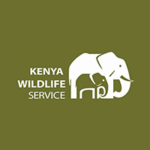
No results available